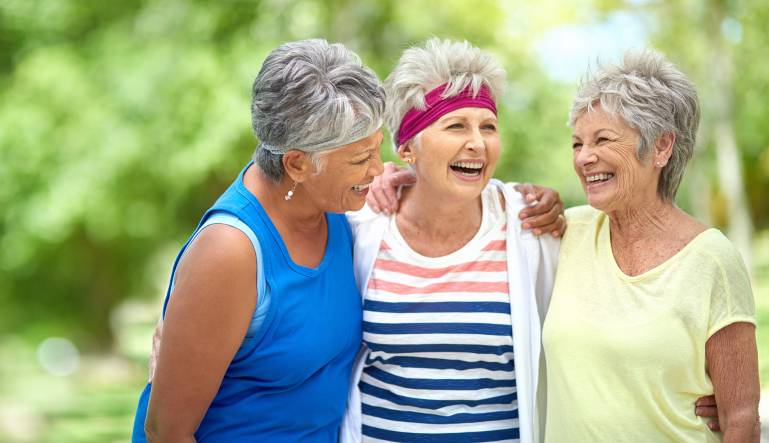Every 11 seconds an older adult in this country is treated in an emergency room for a fall-related injury. Falls are the leading cause of disability among seniors. It adds up to an estimated 2.8 million injuries every year. These shocking statistics from the National Council on Aging highlight the importance of protecting yourself or a senior loved one against falls.
Fall Prevention and Exercise
It sounds counterintuitive, but exercising on a routine basis is one of the keys to preventing falls. While sitting on the sofa may seem safer for seniors, a sedentary lifestyle is linked to a higher rate of falls. This is because regular exercise supports core strength, balance, and flexibility. Each of these is an essential part of fall prevention.
Exercise also keeps your bones healthy at every age. A study completed at Friedrich-Alexander University of Erlangen-Nuremberg in Germany showed women who engage in routine exercise have denser, healthier bones. That guards against osteoporosis, a health condition that contributes to falls and bone fractures.
What types of exercise should an older adult consider and discuss with their physician?
Here are a few suggestions to explore.
Fall Prevention and Senior-Friendly Forms of Exercise
- Go4Life: Created by the National Institute on Aging at NIH, this program is designed specifically for older adults. Go4Life has a variety of free resources to help seniors get regular exercise. You’ll find guides, videos, and tracking tools to chart your progress.
- Walking: It may sound simple, but walking yields many health benefits. These include weight control, diabetes management, and heart disease prevention. Walking also builds core strength and balance. Here are a few tips for making the most of your daily walk.
- Tai Chi: This ancient Chinese exercise is low in impact, but high in results. Tai Chi aids in managing the pain and symptoms of arthritis while improving balance, flexibility, and strength. The Arthritis Foundation has Tai Chi videos and guides that can be viewed online at no cost.
- Swimming: Another form of exercise that builds stamina, flexibility, and strength is swimming. Water aerobics in a warm pool can also ease pain associated with swollen joints. Some Medicare Advantage plans are part of the SilverSneakers network that gives members access to fitness centers across the country. Many have aquatic programs and classes for seniors.
- Strength Training: Strength and balance go hand-in-hand. Whether it’s using light weights or resistance bands, working a few sessions of strength training into your week will likely aid in fall prevention.
Encouraging Physical Fitness at Five Star Senior Living
At Five Star Senior Living communities, we recognize the vital role physical activity plays in aging well. It’s at the heart of our Lifestyle360 program and one of the five dimensions of wellness.





 The advantages of eating dark chocolates are small, but enough to satisfy the sweet tooth in all of us. Dark chocolate contains flavonoids as well as antioxidants. Flavanol is a specific type of flavonoid which has great anti-inflammatory effects, that is specifically found in cocoa, giving it its pungent taste. The antioxidants in dark chocolate help our bodies resist cell damage. Both flavanol and antioxidants have several health benefits including positive influences on heart health, assisting in decreasing blood pressure and also improving blood flow to the brain. Keep in mind that not all forms of chocolate have high levels of flavanols. The more a chocolate is processed, the more flavonoids are removed. It is always best to choose dark chocolate rather than milk chocolate to truly absorb its heart healthy benefits. Remember, moderation is key; 1 oz. of dark chocolate four times a week should satisfy the sweet tooth in all of us and provide some heart healthy benefits.
The advantages of eating dark chocolates are small, but enough to satisfy the sweet tooth in all of us. Dark chocolate contains flavonoids as well as antioxidants. Flavanol is a specific type of flavonoid which has great anti-inflammatory effects, that is specifically found in cocoa, giving it its pungent taste. The antioxidants in dark chocolate help our bodies resist cell damage. Both flavanol and antioxidants have several health benefits including positive influences on heart health, assisting in decreasing blood pressure and also improving blood flow to the brain. Keep in mind that not all forms of chocolate have high levels of flavanols. The more a chocolate is processed, the more flavonoids are removed. It is always best to choose dark chocolate rather than milk chocolate to truly absorb its heart healthy benefits. Remember, moderation is key; 1 oz. of dark chocolate four times a week should satisfy the sweet tooth in all of us and provide some heart healthy benefits. 





